LEVELATOR
Senior Lifting Mobility Solution
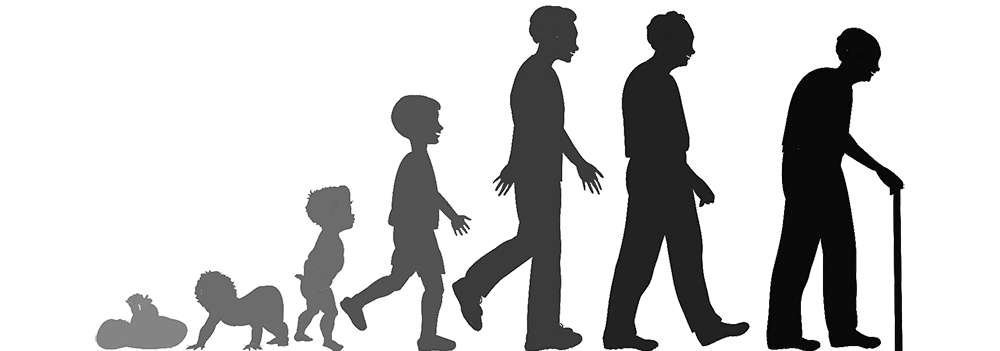
AGING
Where to focus?
World aging population over age 60

12%
1950

32%
2050
Major issues caused by aging
Health
38%
Physical
35%
Psychological
27%
All issues could result in life inconveniences.
Universality of inconveniences

Mobility
issues
55%

Off-balance
40%
Vision
weakness
37%

Hearing
weakness
35%

Memory
issues
20%

Incontinence
18%
Aging-caused inconveniences lead to various health problems and in turns, accelerating aging process. Mobility issues are the most common inconvenience suffered by seniors. Hence, it is necessary to focus on senior’s mobility issues in priority.
MOBILITY ISSUES
Fact & Analysis
From age 65 to 85
Accident rate
33%
|
45%
Injury & death rate
10%
|
50%
25,500
deaths/yr
Off-balance and falling take a major part of safety concerns caused by mobility issues. The most profound effect of falling is the loss of functioning associated with independent living. These injuries cause senior hard to walk or live independently, as well as increase the risk of early death. Many people who fall, even though they are not injured, develop a fear of falling. This fear may limit their activities, which leads to reduced mobility and loss of physical fitness, in turn, increasing their actual risk of falling.
Current solution & usage rates
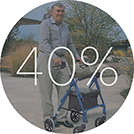
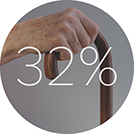


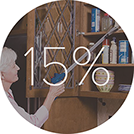
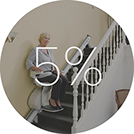
Rollator and walker are widely used for senior mobility issues.
What do users say?
USER EXPERIENCE
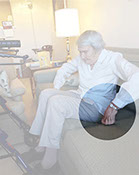
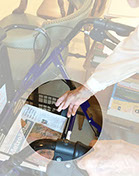
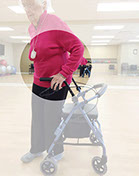
Hard to get up.
Need more storage space.
Has to turn body around to sit down.
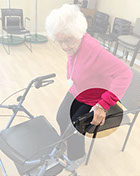
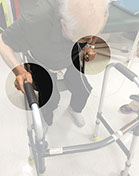
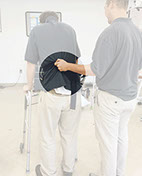
Has to reach chair arms before sit down.
Walker can not help me stand up.
Need extra support by wearing a safety belt around the body.
CURRENT PRODUCT

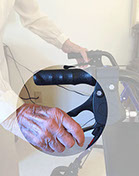
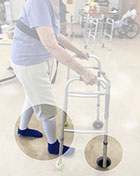
Rollator is too big for room space.
Hard to lock the brakes.
Walker rolls too fast.
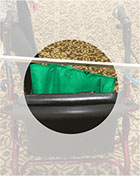
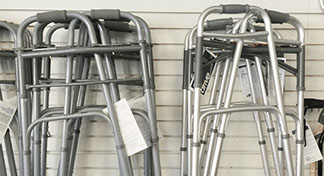
Current product sizes are limited. Alternation needs to be made before used by users.
Need space to put the grabber.
User Journey Map

Findings
- Unthoughtful product designs could cause inconveniences and safety issues.
- Current products focus on solving one problem at a time, ignoring the related issues that remaining to be solved.
- The relationship between the product and user is weak and more ergonomics aspects need to be considered.
Ergonomics study
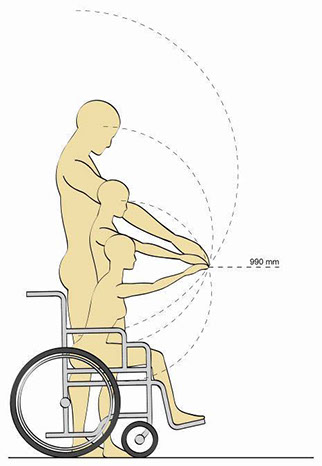
Reachable range
Human reachable range decreases with age. The normal intersect of reachable range for adults is 990 mm. As age goes, there is an average of 70 mm range of reaching difference between people aged 40 and 80.
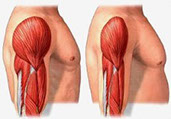
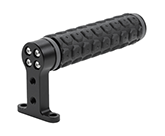
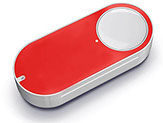
Muscle Sarcopenia
Human can lose 3% to 5% of their muscle mass per decade after age 30. An average of 8-12% less of strength requirement should be considered into products for seniors.
More handles
Handles are great mobility aids. A relatively large, comfortable handle should be considered when there needs a support.
Harder surfaces
The fingers start to lose sensitivity with age. A senior product should provide fingers with more sensation. A harder surface or interface can give seniors stronger feedback so they know whether they operate products correctly.
Current market insight
Market trend

Rollator
is the bestseller
Over 60%-65% of customers purchase rollators for their mobility support.

Walker and cane sold as a combo
Walker and cane are sold together for seniors who suffer the off-balance issue.
Buying a series
of products
Half of customers buy a set of products instead of one.
Customer review

Slippery wheels
on devices
Wheels on the walker and rollator rolls too fast and hard to control.

Uncomfortable
rubber texture
All the handle surfaces are made from hard plastic or rubber, which feels uncomfortable to seniors.
Senior mobility issues affect every aspect of senior's life, especially in safety concerns. Current product, such as walker, only focuses on solving one mobility problem at a time. Although it helps seniors walk, problems still remain when it comes to switching between sitting and standing. Walking, standing and sitting have yet to be addressed as whole, which has ignored by most designers.
Design opportunities
Design strategy
+
Improving user experience



Smoothing movement
Improving comfort
Refining reachability
Solving problem



Off-balance prevention
Weight reduction
Stability enhancement
IDEATION
Direction 1: Movement
Direction 2: Safety
PROTOTYPE TESTING
DEVELOPMENT
Direction 1 prototype: Gas spring seat
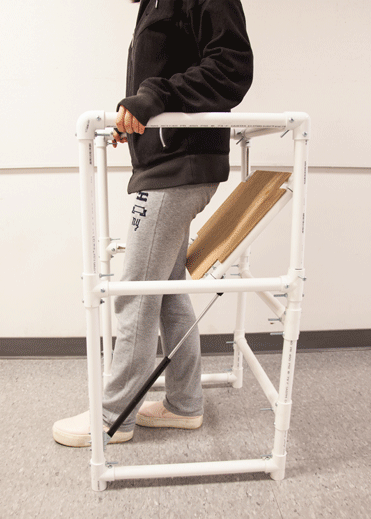
Pros
- Lifting body
- Slowing down sitting
- Providing weight support
- Self-activating mechanism
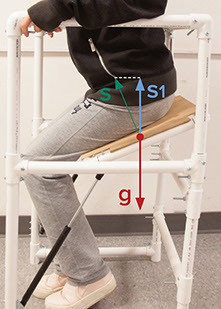
Cons
- Gas spring configuration (extension force and length) depends on user’s body weight.
FINAL DIRECTION
Cintiq sketch
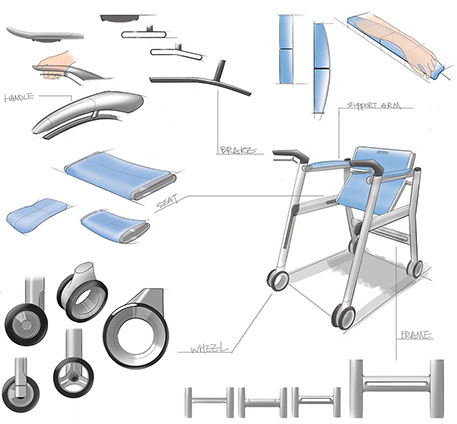

Cons
- A single direction falling prevention
- The effectiveness of safety legs depends on the ground condition.
Direction 2 prototype: Safety legs
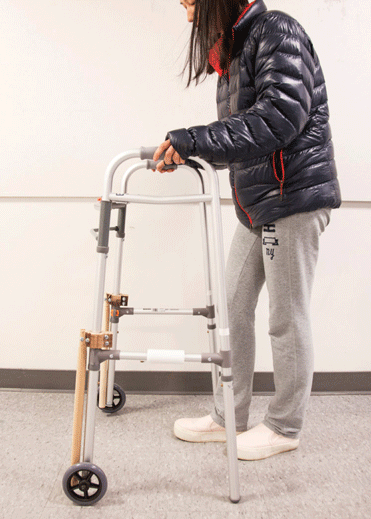
Pros
- Preventing falling
- Providing strong support
- Self-activating mechanism
- Easy installation
Solidworks modeling and Keyshot rendering
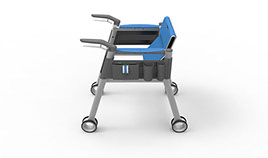
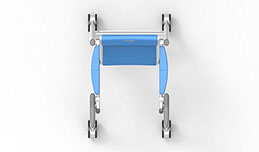
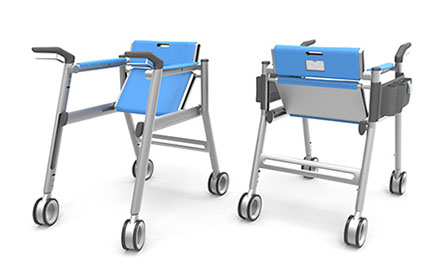
Key features
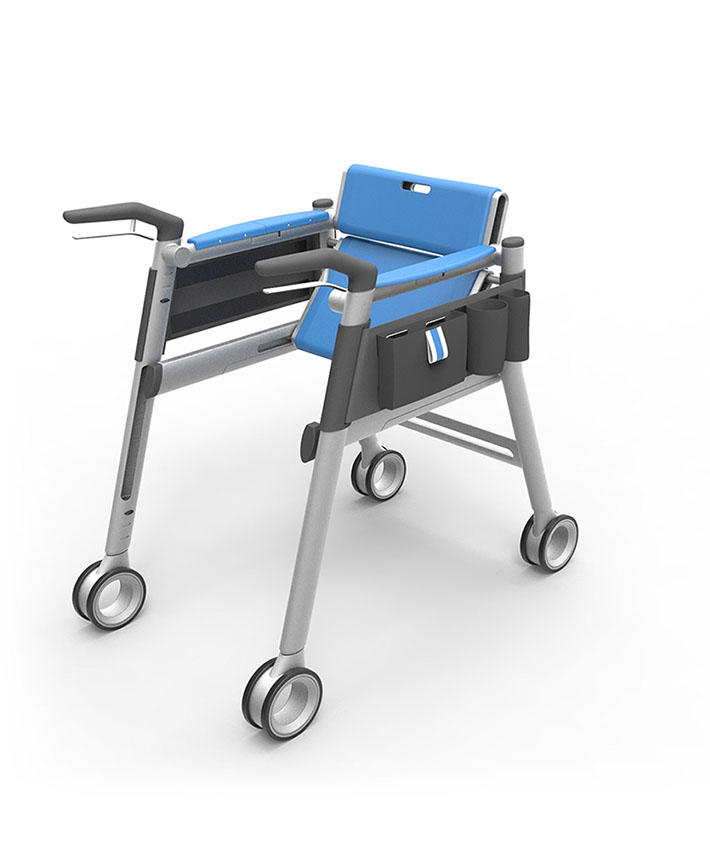
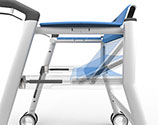
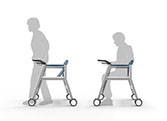
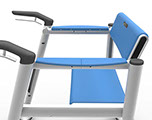
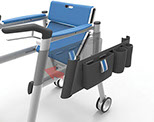
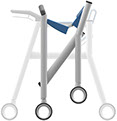
Gas spring sliding seat
A gas spring inside the seat frame is compressed or decompressed in response to the user’s weight.
One orientation
One orientation design enables user to walk and sit in the same direction, without turning around the body.
Supporting arms
Silicon-cushioned arms provide comfort as well as the support during the user resting, standing up and sitting down.
Customizable storage
The side accessory pouches are easy to access and can be customized based on user’s need.
Foldable & portable
The frame can fold flat for easy transportation and storage.
Technical specifications
Net weight: 18lbs
Weight capacity: 350 lbs
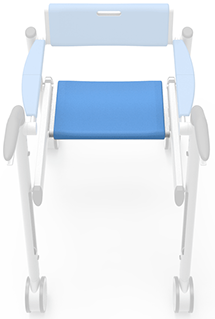
14x11 inches
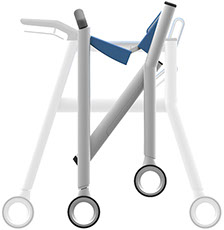
12.5 inches
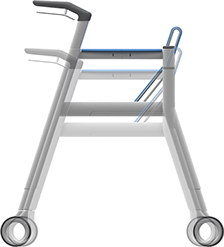
35.2-37.5 inches
33-38 inches

Silicone rubber
High-density foam
Natural gum rubber
Brushed aluminum
Synthetic rubber
Demonstration
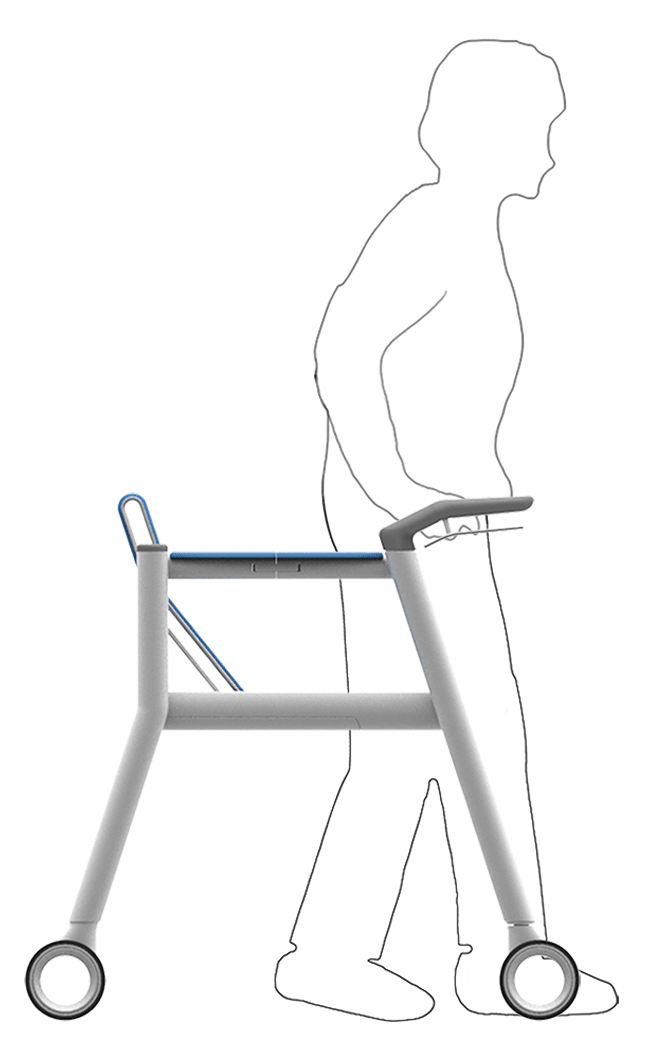
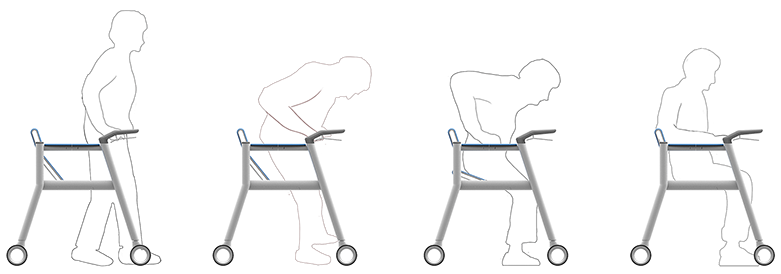
Walking
Taking brake &
reaching arms
Putting weight on
seat & sitting
Resting
Model making
80 HOURS OF PROCESS
3D printing & Sanding
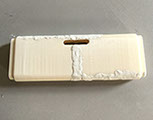
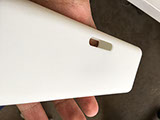
Molding & Casting

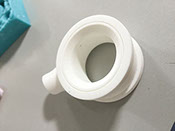
Painting
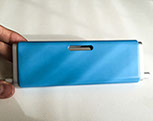
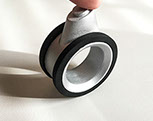
Laser cutting, Sewing & Heat pressing
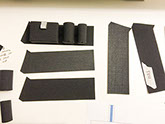
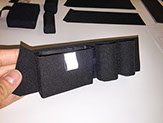
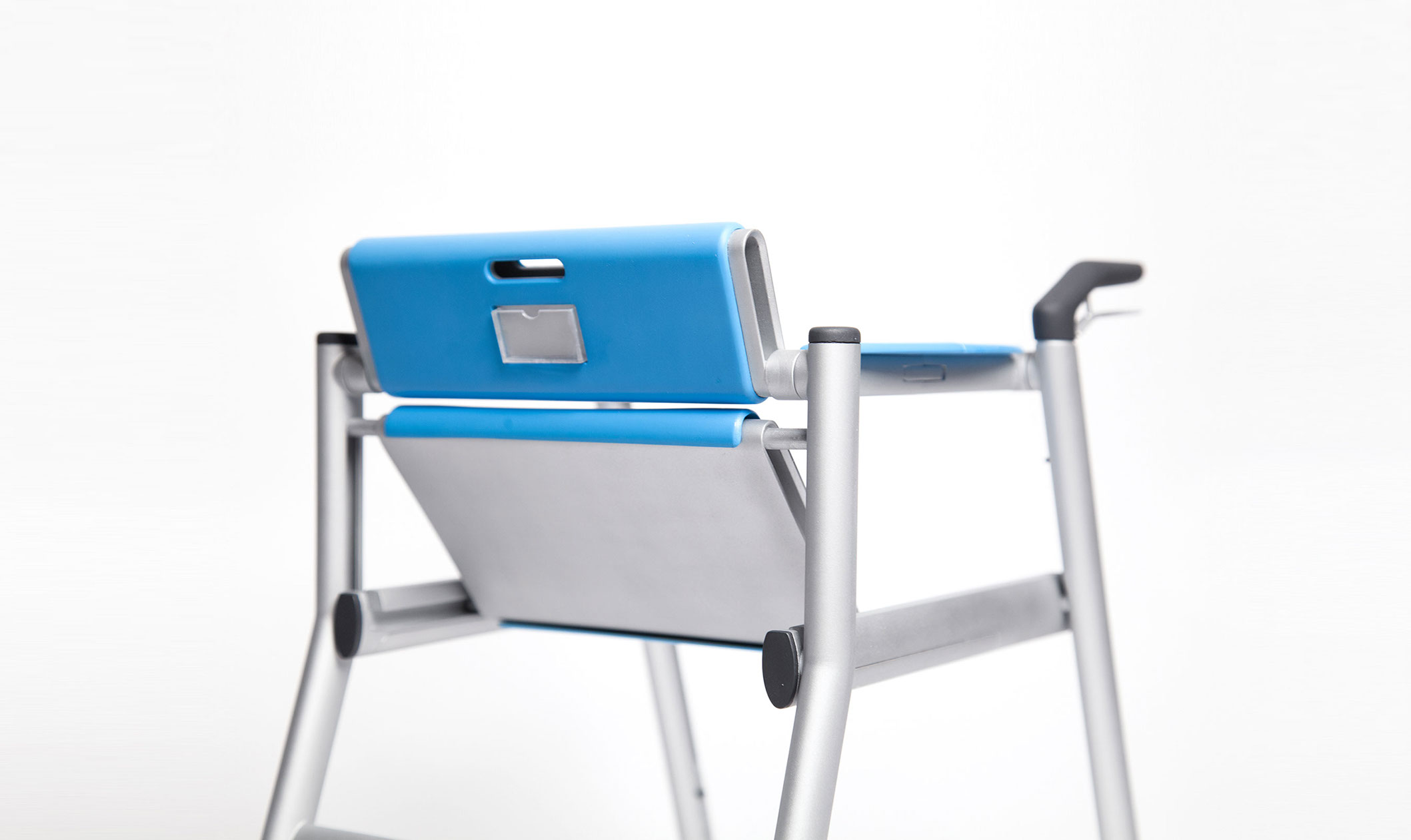
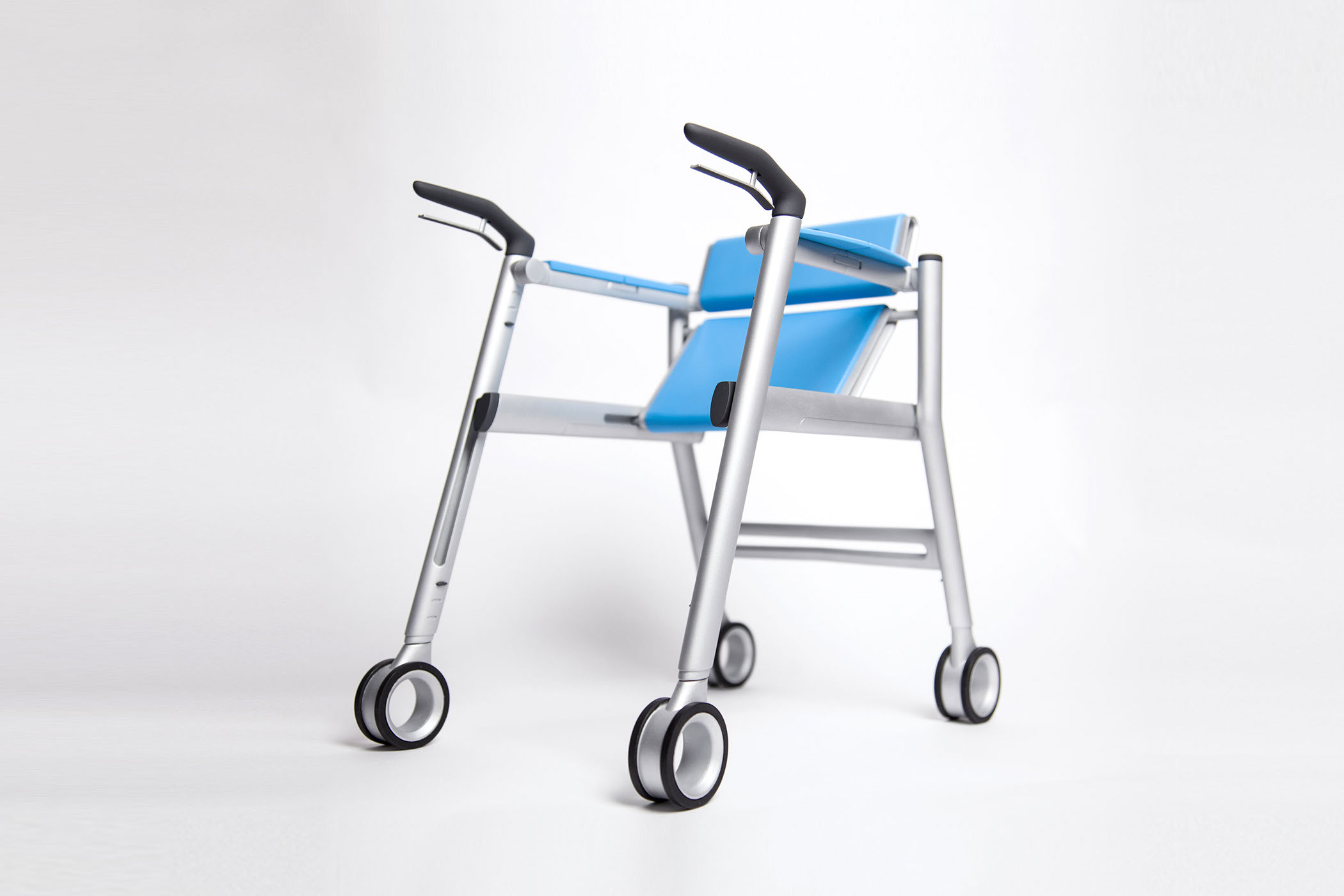

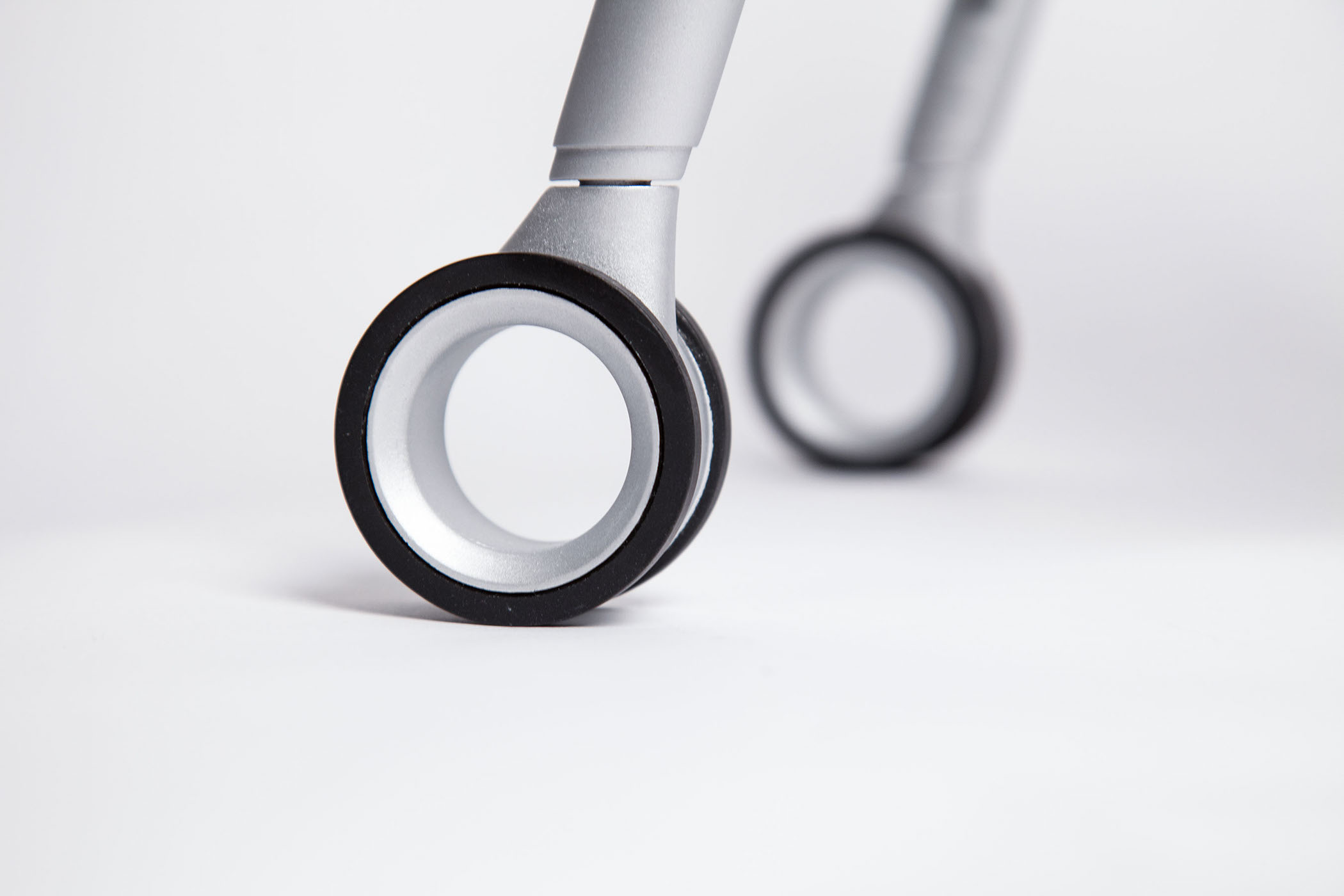
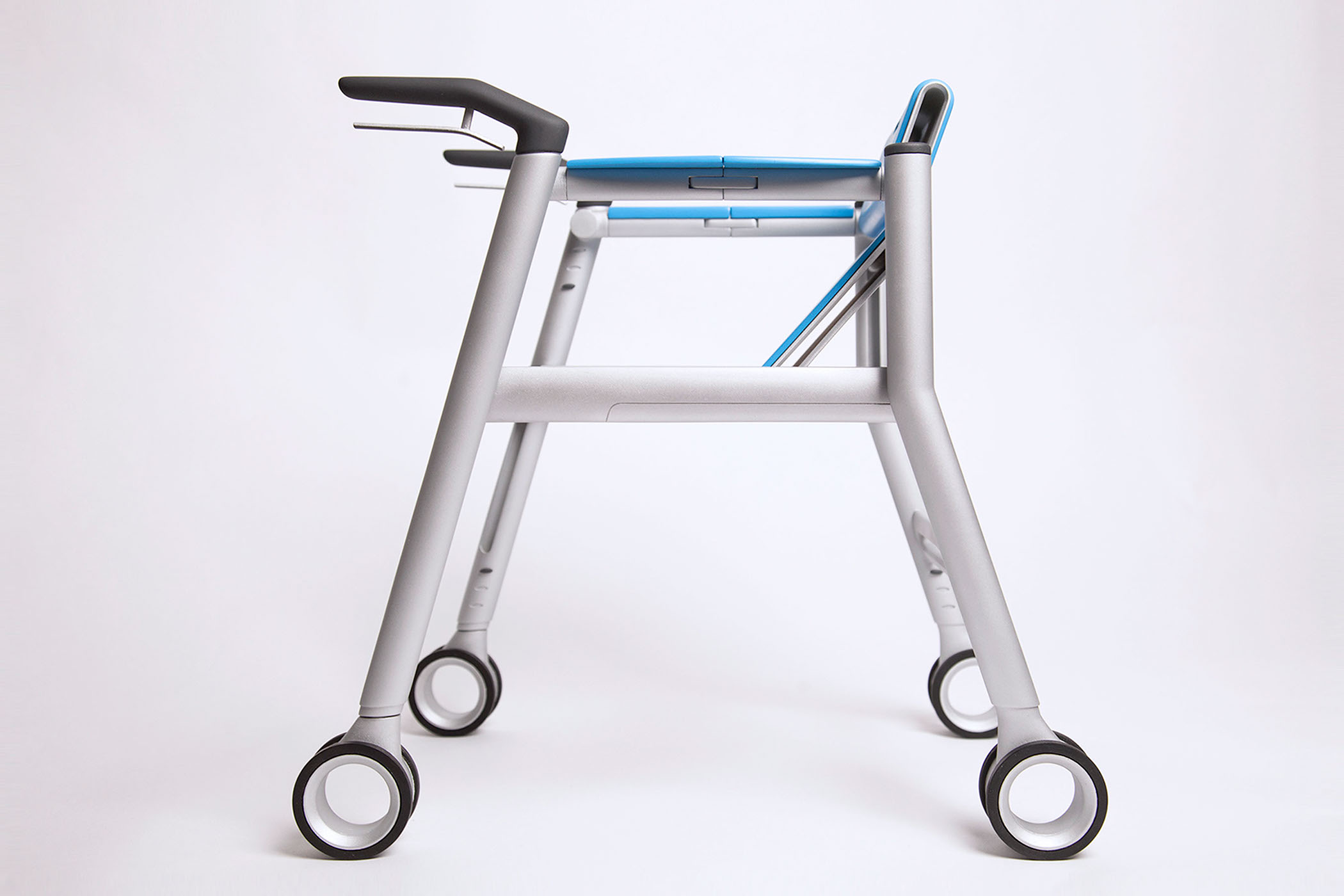
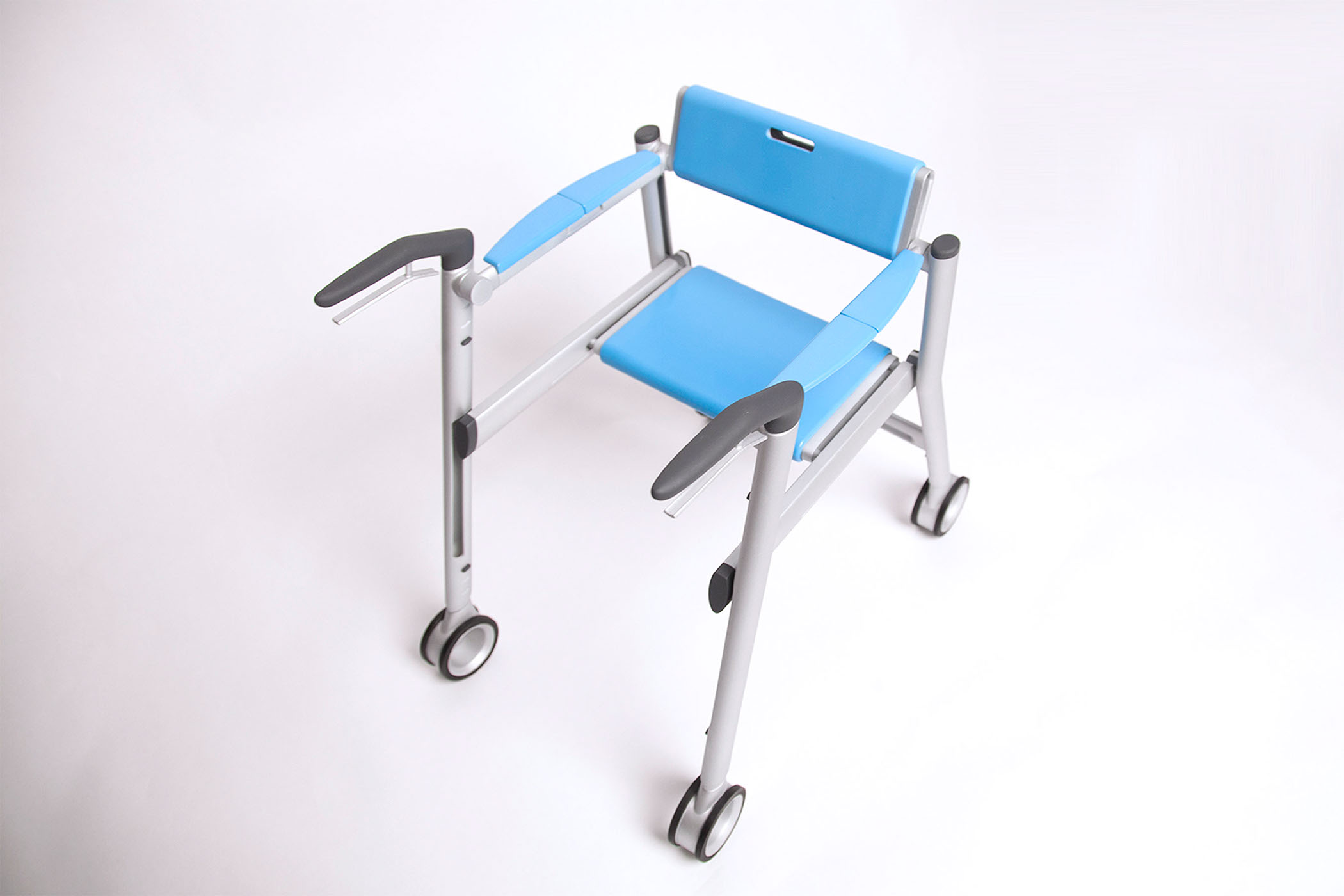
© 2018 Will Wang Design